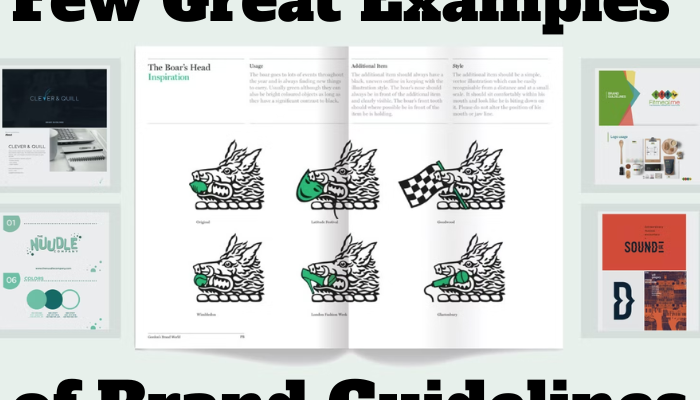Brand guidelines are one of those things that can make or break a company. They are the foundation of a company’s visual identity and need to be consistent, clear, and concise. Here are a few great examples of how to do brand guidelines right.
Each example showcases how to create an easily navigable set of guidelines with clear sections on usage, typeface, colors, and more. By using strong visuals and easy-to-follow instructions, these brands have nailed their brand guidelines and created a successful visual identity.
What Are Brand Guidelines?
A brand guidelines is a set of rules that contains the colors, fonts, logo usage, and other design elements that represent your brand. It helps maintain consistent branding across all marketing channels. A strong brand is essential for any business, because it helps you stand out from the competition and build trust with customers.
Creating clear and concise brand guidelines is an important step in developing a successful brand identity. Your brand guidelines should be based on your company’s values and mission, and they should be created with input from your entire team. Once you have decided on the elements that will make up your brand identity, it is important to document them in a brand guidelines document. This will ensure that everyone on your team understands the standards that you have set for your brand, and it will help you maintain consistency as your company grows.
5 Companies With Killer Brand Guidelines
A good brand guideline should be clear, concise and easy to follow. It should be a living document that is updated regularly to reflect the evolving needs of the company. Here are five companies with brand guidelines that are sure to inspire.
- Google: Google’s brand guidelines are focused on simplicity and consistency. They include clear instructions on how to use the company’s logos, colors and typography. The guidelines also provide helpful tips on creating effective marketing materials.
- Apple: Apple’s brand guidelines are famous for their attention to detail. The company’s logo is one of the most recognizable in the world, and its branding is consistently applied across all of its products and communications.
- Nike: Nike’s brand guidelines are built around the idea of “authentic sports performance.” The company’s logo is simple and memorable, and its messaging is focused on motivating athletes to achieve their potential.
- Coca-Cola: Coca-Cola’s brand guidelines focus on tradition and heritage. The company’s iconic red-and-white color scheme is one of the most recognizable in the world, and its marketing efforts are centered around nostalgia and positive emotion.
- Walmart: Walmart’s brand guidelines Data-driven Company Guidelines emphasize customer service and value. The company’s logo is uncluttered and easy to read, and its advertising focuses on providing low prices for everyday necessities.
Tips on How To Create Brand Guidelines
- Define your brand voice—Your brand guidelines should include a section on voice, which will detail how your company communicates with the public. This should include everything from the tone of your website copy to the way your customer service team handles phone calls. By clearly defining your brand voice, you can ensure that everyone who represents your company is on the same page.
- Develop a visual style guide—Another important element of brand guidelines is a visual style guide. This will outline how your logo should be used, what colors are associated with your brand, and what typefaces should be employed in marketing materials. Having a cohesive visual identity is essential for building name recognition and customer trust.
- Create messaging guidelines—In addition to voice and visuals, your brand guidelines should also include messaging guidelines. This will involve developing key messages that capture the essence of your brand and can be used in a variety of marketing materials. By having a few key messages that everyone in your organization can use, you can ensure that your branding remains consistent even as you expand your marketing efforts.
- Establish social media best practices—With social media being such an important part of contemporary marketing, it’s essential to have social media best practices included in your brand guidelines. This will outline how you want employees to interact with customers on sites like Facebook and Twitter, as well as what kind of content should be shared. By setting some ground rules for social media usage, you can help to protect your brand’s reputation online.
- Keep it updated—Finally, it’s important to remember that brand guidelines are never set in stone—they should be updated on a regular basis as your business grows and changes. By revisiting your brand guidelines on a yearly basis, you can ensure that they continue to accurately reflect your company’s values and objectives.











Comments